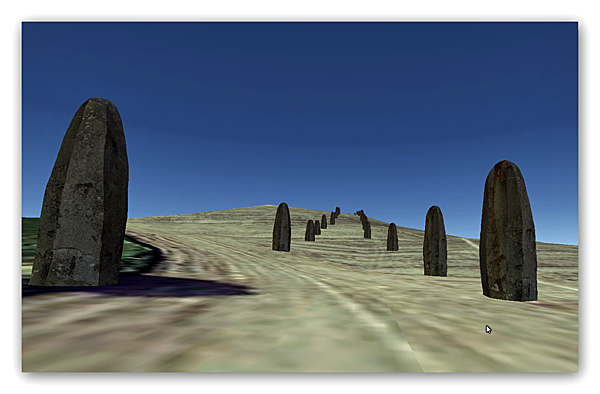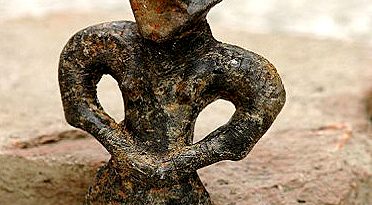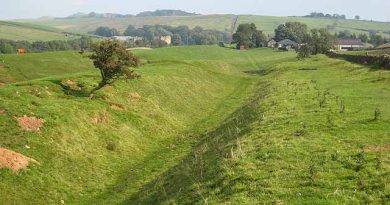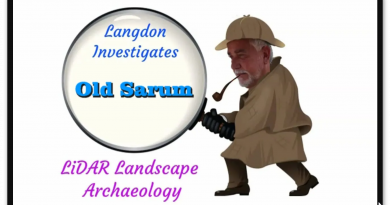Silbury Avenue – Avebury’s First Stone Avenue
In 2014 a remarkable new Stone Avenue was located at the UNESCO World Heritage Site of Avebury in Wiltshire. Previously, two other Stone Avenues called the ‘West Kennet’, and the ‘Beckhampton’ are known to archaeologists as they have some of the massive Sarsen stones that line these Avenues still present, but this newly discovered pathway was never thought to exist. (Silbury Avenue – Avebury’s First Stone Avenue)
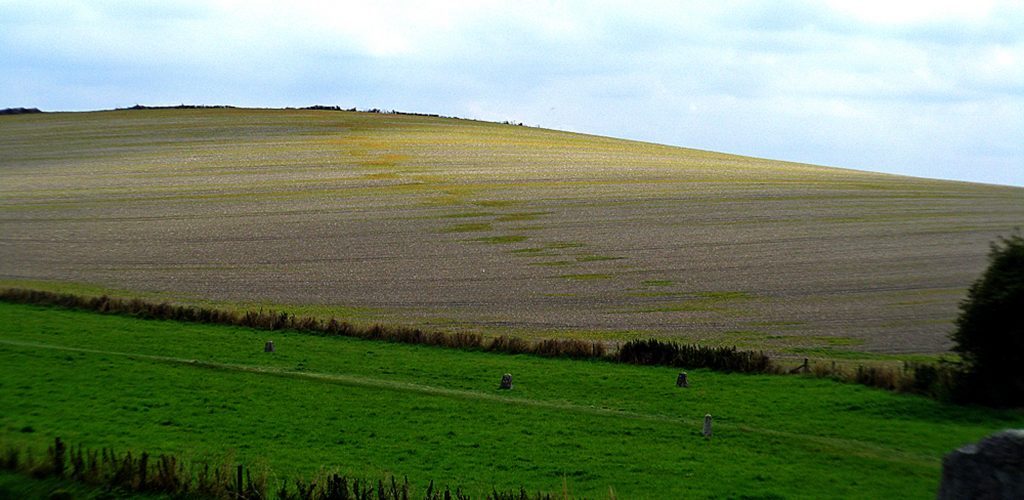
| Waden Hill showing the patch marks of stone holes under the soil |
As the discoverer, I have named the pathway ‘Silbury Avenue’ as it is merely the path directly to Silbury Hill over Waden Hill. The discovery was made by digital photographic pictures that show a series of green ‘patches’ that measures over 470 metres in length towards the apex of the hill. We can therefore estimate if it ran down the far side of the hill towards Silbury Hill, it would have been approximately 1470 metres in total length. (Silbury Avenue – Avebury’s First Stone Avenue)
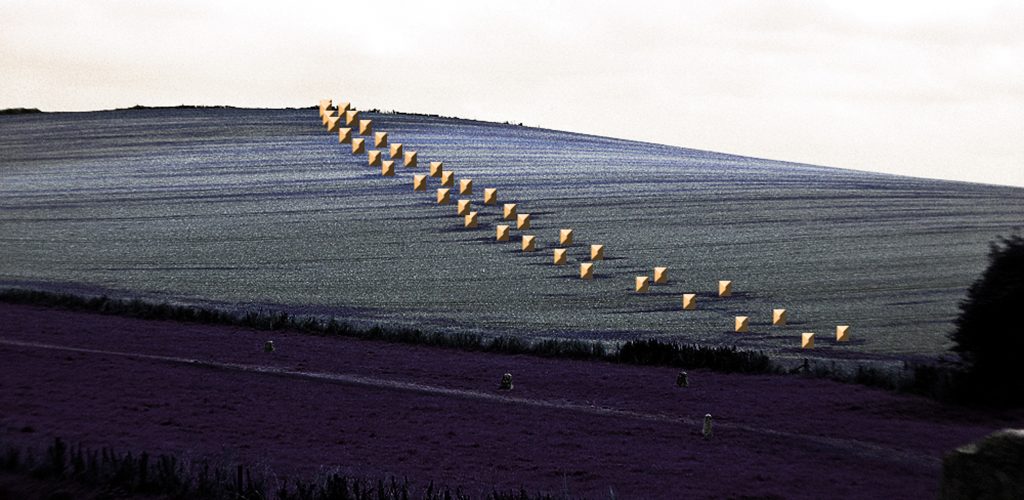
| Waden Hill in contrast with stone markers added |
From these measurements and by counting the discolourations of this new Avenue, we can estimate that ‘Silbury Avenue’ had at least 19 pairs of stones to the apex with an average of 25m between each pair. We can also estimate the width of this avenue at about 15m to 20m. In comparison, the West Kennet Avenue (calculated from Google Earth) has a pairing at a distance of about 22 – 24 metres, and a width of the Avenue is approximately 15m to 17m – so a very close match.
Excavations and restoration work carried out by Keiller and Piggot in 1936 on the West Kennet Avenue showed that this part of the Avenue was built in series of ten straight sections and not the smooth serpentine shape as suggested by the eighteenth-century antiquarian Stukeley.
Where stones were missing, they placed concrete markers above the excavated stone holes where they had formally stood, so providing a record of the northern section of the Avenue. Paradoxically, Keiller’s plan survey of this section of the West Kennet Avenue shows it heading away from the southern entrance of the henge, while ‘other’ pairs seem to repair this ‘error’ with an awkward zig-zag route to connect with the southern entrance.
Recent archaeological commentary on the Avenue has suggested two interpretations for this convoluted approach route. Burl claimed that this was a mistake, of the prehistoric builders in starting the Avenue at both ends but failing to anticipate an accurate direction for each section to join up (Burl 2002). But Gillings & Pollard argued that Keiller’s excavation plan is a mistake, and re-excavation will establish a more direct route for this section of the Avenue (Gillings and Pollard 2004, p. 78).
Yet quite rightly (Sims 2009) suggested that if it were a mistake, then it cannot explain why elsewhere in the Avebury monument there are more complex highly accurate pre-planned features.
The reality is that Burl, Gillings and Pollard are all wrong, as the discovery of my new avenue shows why such a strange ‘zig-zag’ shape was formed – as the original stones were aligned with ‘Silbury Avenue’ from an earlier date than the West Kennet Avenue. This Avenue led directly to Silbury Hill but was then abandoned for a path leading SE around the base of the hill to ‘The Sanctuary’, at a later date.
Moreover, an earlier antiquarian of the seventeenth-century, John Aubrey, recorded how the other end of the Avenue connected to the western entrance of the Sanctuary with the exact same dog-leg design. Showing the two ends of West Kennet Avenue were additions.
The change of direction on the Southern section of West Kennet Avenue shows that this Avenue was used at a very late date in Avebury’s history and after the Sanctuary’s construction. This would explain why the Sanctuary was altered so many times in its past. The likelihood is that The Sanctuary was the termination point of the ‘Ridgeway’ over an adjacent hill. (Silbury Avenue – Avebury’s First Stone Avenue)
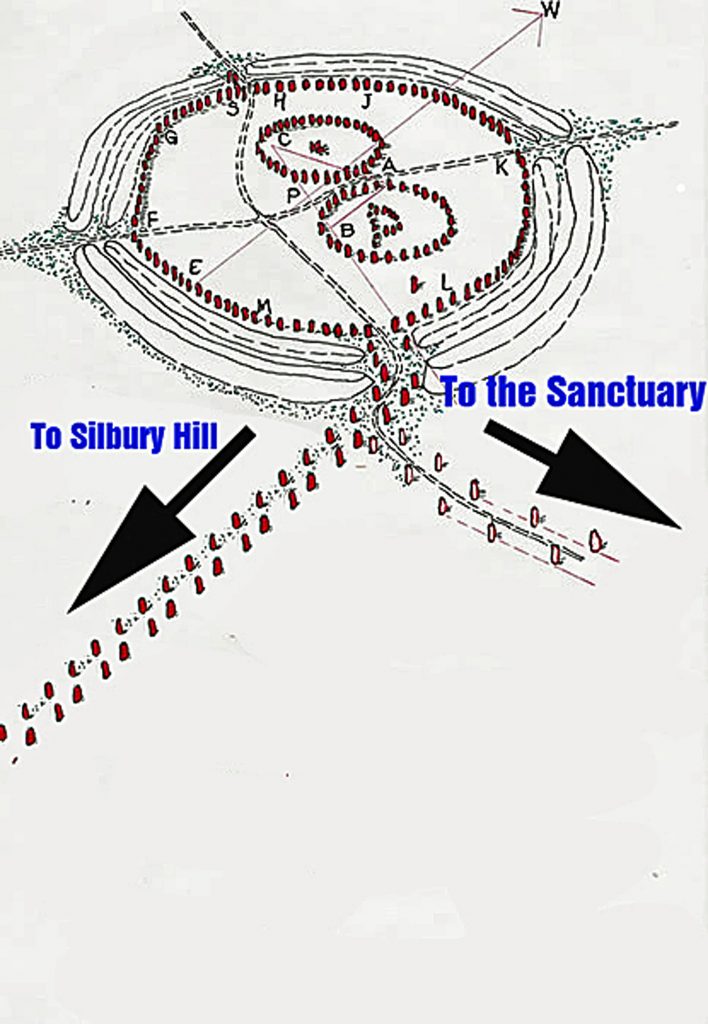
| The ‘Zig Zag’ Avenue currently seen is simply explained |
Silbury Avenue doesn’t go in the shortest line to Silbury Hill, but to the highest point, where we find a series of nine Barrows directly to the east side of the new Avenue. Archaeologists have dated these features as Bronze Age, although no excavations have ever been attempted as the barrows (or other features on top of the hill) were destroyed even before Stukeley visited the site in the 18th century.
The only significant findings made in this area was in “An oval-shaped pit”, three feet deep, and discovered by workmen in 1913 while digging a trench for water pipes on Waden Hill. The pit, situated 105m NE of the pond on the hill, contained Windmill Hill sherds, sarsen muller, two flint scrapers, charcoal and burnt flints, together with broken bones of sheep, pig and ox, some of them burnt.”
The barrows on the left of Silbury Avenue indicate that these features were built after the Avenue was constructed and not because of them, as the path passes the barrows to one side without termination. Although the newAvenue would have led towards Silbury Hill, it did not terminate at the monument as it was inaccessible due to it being surrounded by deep water, which can still be seen today during the winter seasons. (Silbury Avenue – Avebury’s First Stone Avenue)
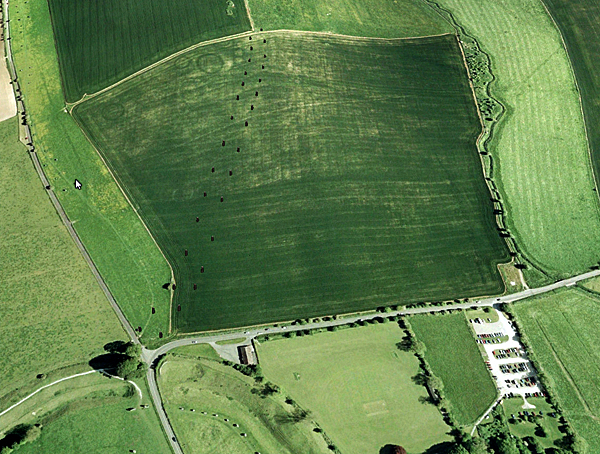
Waden Hill showing the pathway stones and the Round Barrows at the Apex to the left only
The topology shows that Silbury Hill would have been built as part of the River Kennet, on a natural peninsula. This high groundwater table which causes this flooding is due to springs that have recently been located. (Whitehead, P. and M. Edmunds. 2012. Palaeohydrology of the Kennet, Swallowhead Springs and the Sitting of Silbury Hill, English Heritage, Research Report Series 12-2012.
After the ‘great melt’ of the last ice age, this area would have been almost completely flooded at the start of the Mesolithic period. The only part of Avebury above this ‘initial water level’ would have been Windmill Hill – which is NW of the current Avebury site. This site shows evidence of occupation as it is what archaeologists call a ‘Causewayed Enclosure’, as they (incorrectly) imagine, that the moats built to accommodate boats were, in fact, dry ditches in an attempt to contain cattle – although a fence would have been quicker and more effective.
More information on the new stone avenue can be found HERE and a video is available HERE.

